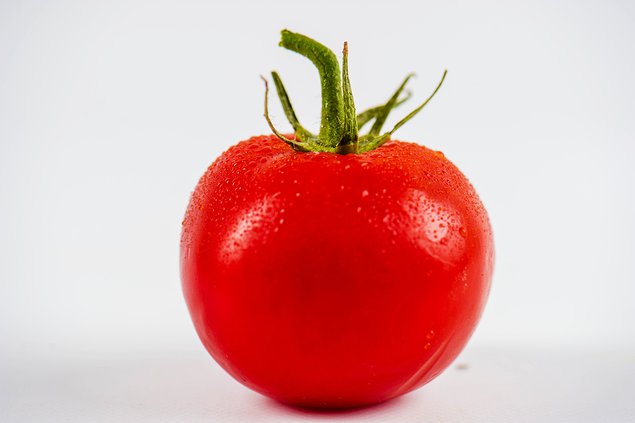By Blake Carter
County Extension agent
Hey, y’all. This week and in the future I will be switching up my articles in the paper a tad.
All of them won’t be written by me. I work closely with the Effingham Master Gardeners and they have a wealth of knowledge to share from their personal experience.
Today, I want to share one of Mark Anderegg’s experiments for growing tomatoes last year.
Straw-Bale Gardening Tomatoes (by Mark Anderegg)
“I became interested in the method of planting in straw bales whereby the bales are kept wet and become a moist compost for the plants to grow in. I found a step-by-step procedure to prepare the bales. However, tall plants were not recommended for the method because they were more difficult to support, so my plan included making stiff tomato cages made from galvanized stockade fence which I had learned about on TV.
The cages were bent into shape but were much harder to bend than expected. I drove stakes made from 2X4s down about eight inches next to each corner of the bales and the cages were tied to the stakes with double tie wire. The idea was to build sufficient support for tall cages and tomato plants.
Since this was pretty much an experiment, I decided for fun that I would go with a fun tomato variety as well, Purple Cherokee Heirloom, which we had grown in the garden. They made delicious tomatoes before and produced a good harvest.
Watering
I found quickly that I needed a water system on a timer that would keep the bales wet and so I set that up. Fortunately, I only had four bales with three plants for each bale so it made easier to use the spray head on a spike type system using on ¼" hose, mounting two spray heads opposing each other on each bale. I started out running the irrigation every six hours for about five minutes, and then tried some other combinations but finally set it to run every four hours for 10 minutes. This was necessary in order to keep the bales wet. It took about three to four weeks before the bales started to soften up enough to let me scoop out an area eight inches wide and eight inches deep, to put each plant with compost and potting mix around it. At that point, they were about six-inch-tall transplants.
Fertilization
I followed the step by step-by-step directions and sprinkled a cup of granular 21-0-0 fertilizer over each bale for the first nine days of watering. After the first week and a half, I I added to that a few tablespoons of blood meal and bone meal, along with the granular 21-0-0, as I had read that tomatoes in straw bales had been known to fail due to a lack of nitrogen.
Throughout the rest of this project, I would add about 2 tablespoons each of bone meal and blood meal several days a week around the base of each plant, and I would add to that about a cup of granular calcium and two tablespoons of Epson salt once a week. Sometimes I would add a cup of potting mix in place of the calcium.
All of this was done, usually in the evening when the plants were not under stress.
Pest and Disease Management
I did run into some pest issues. Researching this on the UGA online, it looked like it may have been due to moth larvae worms, very small feeding on the underside of leaves. To alleviate that, I treated the plants once a week in the evening with a spraying of a Thuricide and water solution and removing many of the damaged leaves.
I knew from experience that larger Caterpillars could ruin a lot of tomatoes as they start to ripen. I had read recently that Carbaryl, an active ingredient in some Sevin dust products could be effective for older stage caterpillars.
At the store, I checked the label to be sure to get the one with that in it. From then on, I kept the plants dusted, repeating after rainfalls. This has worked well.
I also continued spraying Thuricide BT solution every two weeks in the evening. As the plants reached about five feet in height, the leaves were attacked by fungal diseases evidenced by rust spots and other spots on the leaves. I treated the plants then with Daconil spray solution in the evening once a week and tried to remove the affected leaves as much as possible.
First Tomatoes and Harvest Season
The plants continued to thrive with growth and numerous blossoms. Finally, the first appearance of little tomatoes occurred around June 20. The plants became bushes with a lot of nice size green tomatoes without any sign of bottom end rot.
At the first sign of ripening, I found two tomatoes which I thought were either wormy or had some pest problem, so I decided to save as many of these green tomatoes as possible and picked about six gallons of green tomatoes, planning to ripen them inside where the assumed worms could not reach them. I laid them out on a plastic tablecloth as I knew from experience, they could still have a problem and start running.
That is exactly what happened to the majority of that first picking as the tomatoes that I had picked began to ripen. As far as I could tell from the UGA website on tomato diseases, it was characteristic of some fungal diseases in that they would develop soft spots and then start to run the liquid, which had a bad odor.
At that point, if you cut them open, the flesh would be turning a yellowish-brown color on the inside. Fortunately, this did not last and ruin the whole bunch, although it did affect about 75 percent of the first picking. The remaining ones which did not go bad were used in chow-chow, and we did have some fried green tomatoes.
After that, I only picked them after they had ripened about halfway. That seemed to work so I continued with that approach and I had plenty of good tomatoes which ripened fully on the vine and were delicious. I’m not sure why the internal ripening problem went away, but I was happy it did.”
I do not know about y’all, but this article had me dreaming about some hot and crispy fried green tomatoes! I want to thank Mark for an awesome experiment that is easy to do. I look forward to sharing more topics and tips from our awesome Master Gardeners in the future!








